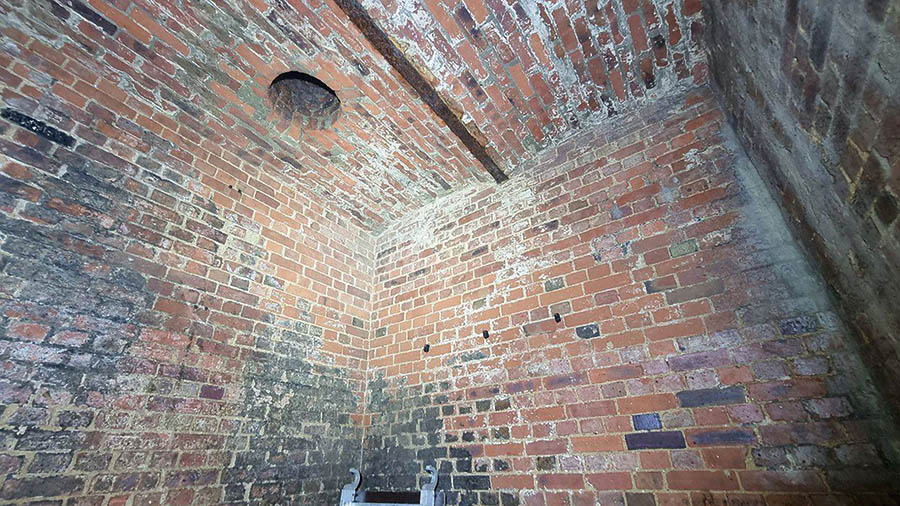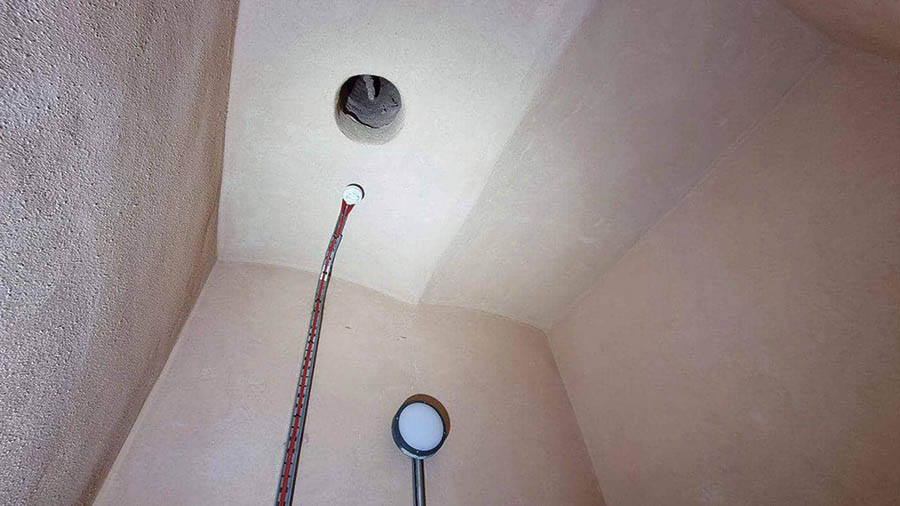Heritage-friendly basement waterproofing: what the Romans did for us
 The heritage-friendly waterproofing of basements and cellars sited partially or fully underground, and subject to on-going moisture problems, can come with significant technical challenges. The primary challenge is how to keep water out of the building without causing long-term damage to the building fabric.
The heritage-friendly waterproofing of basements and cellars sited partially or fully underground, and subject to on-going moisture problems, can come with significant technical challenges. The primary challenge is how to keep water out of the building without causing long-term damage to the building fabric.
The main moisture sources affecting old basements and cellars are:
- Penetrating dampness: being underground, cellar walls are in permanent contact with the damp soil.
- Rising damp: old walls underground are also subject to rising dampness and salts from the ground.
- Water ingress: aging, dampness and on-going salt crystallisation break down the pointing and the building fabric, resulting in water ingress and leaks.
- Condensation and mould: on-going evaporation results in high air humidity, which often results in condensation.
- Dampness caused by incorrect past renovations: modern renovations (cement pointing or tanking, impermeable membranes etc) makes moisture accumulate behind the tanking, ‘pushing’ the water up and resulting in other dampness problems.
There are many basement tanking solutions on the marketplace. A common approach is barrier protection (Type-A waterproofing), which uses a cementitious slurry or a flexible waterproofing membrane (bitumen or rubber) to deal with the water. Another common solution is drained protection (Type-C waterproofing) which is applied when liquid water penetration is present. It involves a cavity drain membrane and sump pump combination to pump out liquid moisture.
However, old buildings require a different approach as none of the modern solutions are breathable. Modern waterproofing materials – cement, tar, plastic membranes etc – block water; but being non-breathable they trap humidity, which can lead to the accumulation of moisture behind the waterproofing layer, damaging the fabric of old, historic buildings in the long term.

Roman lime waterproofing technology
The lime equivalent of modern tanking solutions was developed by the Romans about 2,000 years ago. Being outstanding architects and builders, the Romans observed that adding to lime certain volcanic sands and ashes – also known as natural pozzolans, which are highly porous and breathable lava materials – can significantly alter the properties of lime while retaining its breathability. Those lime plasters are suitable for a very wide range of applications, including many waterproofing applications, which are solved today with modern Portland cement.
The volcanic lime mortars were extensively used by the Romans for centuries in very demanding environments, including sewers, ports, spas and aqueducts, and they have survived for many centuries. They have also been widely used in Venice, as they perform extremely well in the humid and aggressive environment of the Venetian lagoon. The longevity of the plasters is also outstanding: many of them lasting for centuries, much longer than modern cement.
Church crypt waterproofing project
One particular waterproofing project concerned the old coal storage area of a listed church, sited next to the crypt. The 150-year-old coal store was leaking badly, and due to liquid water ingress had become practically unusable. Moreover, the water that found itself into the room started affecting the adjacent crypt.
About three years prior to Core Conservation’s involvement in the project, there was an attempt to remedy the water ingress with modern tanking. The intervention was unsuccessful as the dampness problems returned shortly thereafter. A more robust solution had to be found, and being a listed church the solution ideally had to be conservation-friendly.
After an initial survey aimed at determining the extent of the problem, the renovation specifications were put together and a completely heritage-friendly solution was proposed to the client. In terms of the waterproofing, the proposed solution was based on the Rinzaffo MGN Roman waterproofing plaster, that can stop liquid moisture ingress while letting the walls breathe. The technical details and specifications of this lime plaster are available to read online at www.coreconservation.co.uk. The same material was also applied to the floor, creating a waterproof yet breathable dry floor base.
Once the waterproofing coat dried Core Condervation applied a cocciopesto plaster (lime mixed with brick dust) as a second coat. That has excellent hygrothermal properties, well-known since antiquity. In fact, cocciopesto plasters were used in Roman baths as it is moisture resistant and an excellent internal humidity regulator, while also being aesthetically very pleasing.
The project was a great success. The works were completed early November. Three months later, in early February, despite a very wet and rainy winter the area stayed completely dry: a testament to the performance of traditional Roman conservation technology.
• Read more about conservation-friendly materials and solutions at www.coreconservation.co.uk.













